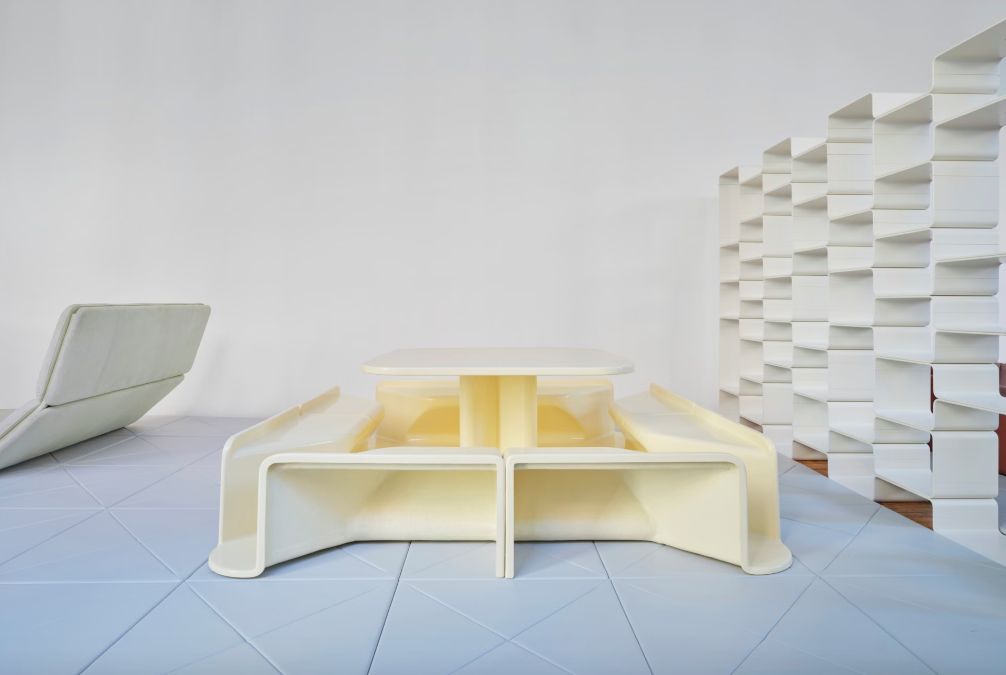Events February 2025

Pierre Paulin: Action House
Judd Foundation presents Pierre Paulin: Action House, an exhibition of furniture by Pierre Paulin (1927–2009) at 101 Spring Street in New York. The exhibition is comprised of six designs by Paulin dating from 1968 to 1972. Pierre Paulin: Action House is co-curated by Flavin Judd, Artistic Director of Judd Foundation, and Paulin, Paulin, Paulin.
In 1968, Pierre Paulin collaborated with Herman Miller on a project that sought to reinterpret Miller’s Action Office program for a residential setting. Paulin designed the entire concept in six maquettes; the project’s goal was to construct and deconstruct, allowing the furniture to become the user’s companion by making it possible to move beyond the limitations of interior design and be the architect of spaces dedicated to life and work. Constrained by industrial parameters, the project was never produced by Miller and existed only as prototypes that remained for years at Paulin’s residence. The maquettes by Paulin, maquette d’aménagement intérieur numbers zero through five, are now part of the collection of the Centre Georges Pompidou. In 2014, the project was officially produced for the first time by Paulin, Paulin, Paulin, the family-run project dedicated to preserve and develop the work of the designer.
In Paulin’s concept of utopian design, the user could combine spaces and modules according to their personal culture, psychological self-conception, and the image they wished to project. In his future, the user could create their own story, based on personal life experience. Three designs—Dune, Déclive, and Tapis-Siège—included in the exhibition were prototypes for unrealized projects during Paulin’s lifetime.
Pierre Paulin (1927–2009) was a pioneering furniture and interior designer known for his visionary use of modern materials and production techniques. Beginning his career as a sculptor, Paulin early on began exploring form, function, and interior design, producing his first furniture pieces by 1953, garnering attention from iconic design manufacturers like Thonet-France.
In 1967, he was invited by Mobilier National, the French institution responsible for furnishing state offices, to design the furniture for the Louvre Museum. At the invitation of then President Georges Pompidou, Paulin was commissioned to redesign the private apartments at Elysée Palace. In 1975, Paulin and his wife Maia Paulin founded ASDA, a design agency and leader in its field, which produced furniture and appliances in bold colors, new textures, and impressive range of materials and forms.
Work by Paulin is in the collection of The Museum of Modern Art, New York; the Musée des Arts Décoratifs, Paris; the Victoria & Albert Museum, London; and the Centre Georges Pompidou, Paris.
Born a year apart, Paulin and Donald Judd approached design as self-consistent systems. In each case they worked from individual ideas of what constituted good design and then elaborated from there, each eventually making complex universes over the years. Paulin, like Judd, anticipated the necessary alliance between a changing world and new production techniques to inform the role of design at a micro and macro level.
Fridays and Saturdays, 1:00 – 5:00 pm
Through February 15
101 Spring Street
New York, NY
Details